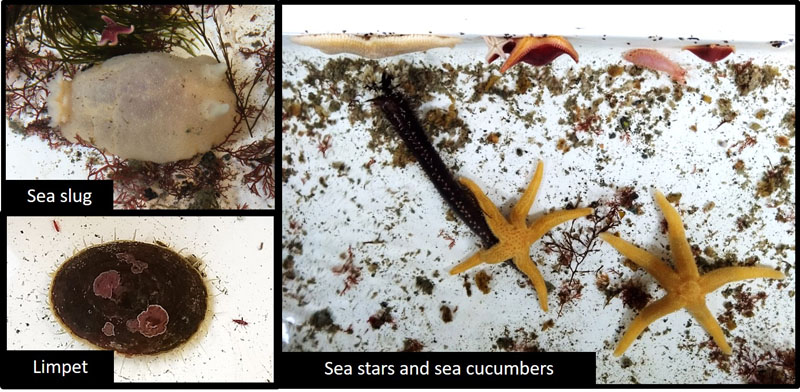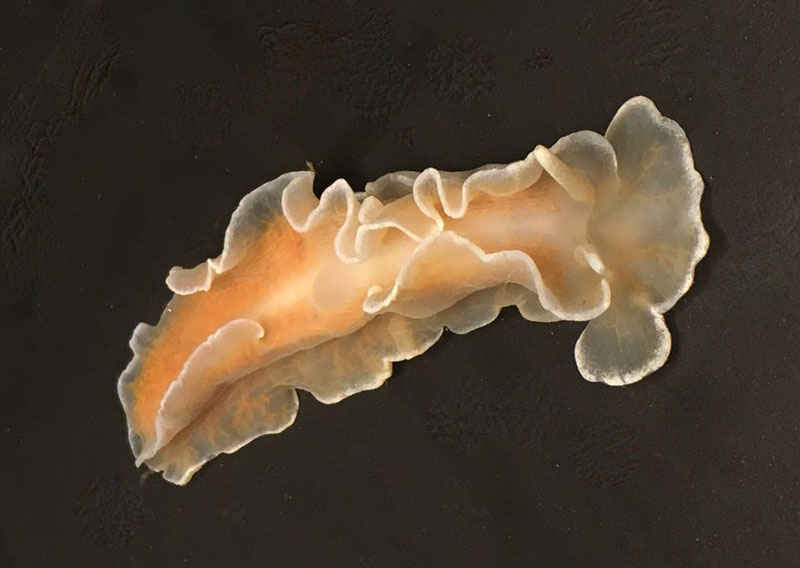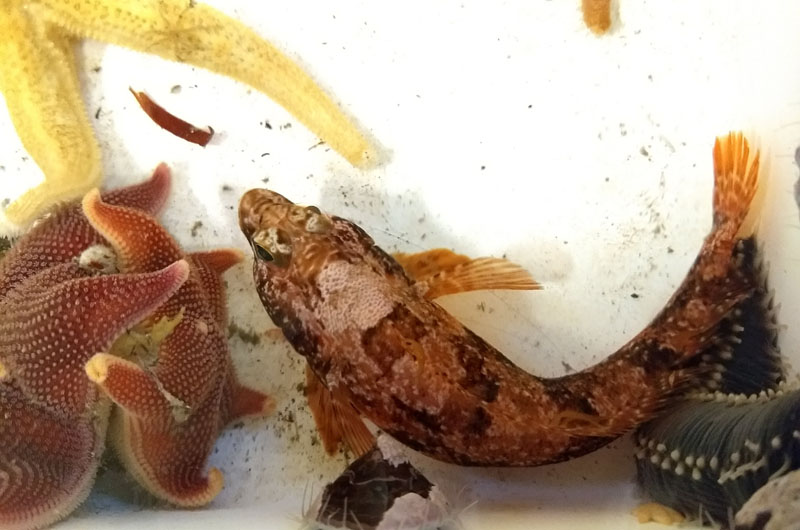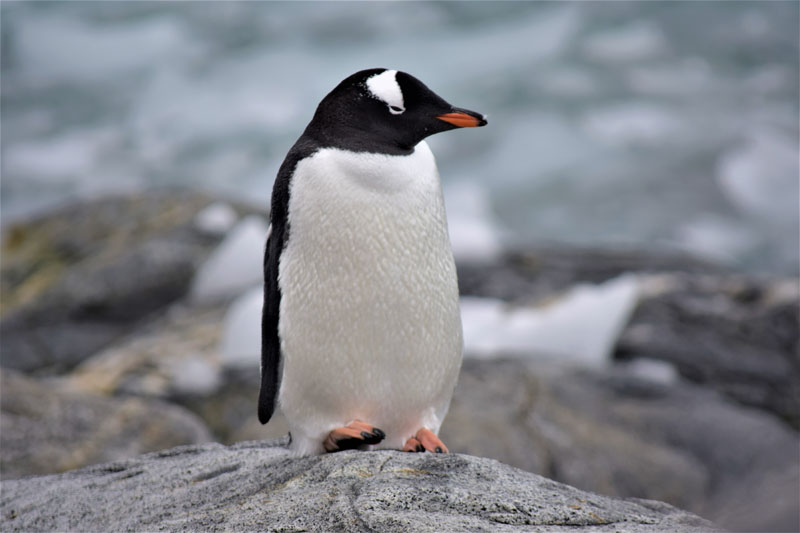
Do you love touch tanks? Have you ever wondered what kinds of fascinating creatures are found on the seafloor in Antarctica? Well, let me give you a sneak peek by sharing one of my favorite parts of Antarctica with you… our sorting table.
Last week, CJ discussed all of the hard work (and clothing) that goes into getting to our dive sites and back to Station. While the boating and dive tending are always an adventure, the real excitement begins back in the aquarium room when we get to empty the dive collection bags into the sorting table to discover all of our treasures from the sea for the day!
Depending on the dive and goal of the day, we could spend our afternoon/evening doing anything from searching through seaweeds to find tiny snails and amphipod crustaceans to searching through reference books to identify sea slugs like the beautiful one (more properly called a nudibranch) pictured below.

With each dive, the sorting table community changes a little as exciting new creatures are collected and added! Over the course of the past couple of weeks, the tank has taken on the general appearance of a touch tank that you might find in an aquarium… just with MUCH colder water.
Through hours of sorting, we have found sea spiders, isopods (the pill bugs or doodle bugs of the sea), sea cucumbers, limpets (marine mollusks closely related to snails), sponges, sea squirts (blob-shaped marine invertebrates closely related to vertebrates and that Maggie’s post introduced), and lots of sea stars among others! The occasional fish, usually a juvenile, even sneaks in to join the party.

Although all of this sorting of cool creatures takes long hours, we do allow breaks to admire a particularly beautiful sunset or surprise visitors to the Station like the Gentoo penguin that dropped in a few days ago.

Now that this blog is done, it is time for me to return to the aquarium room and delve back into the wonderful world of Antarctic invertebrate discovery!